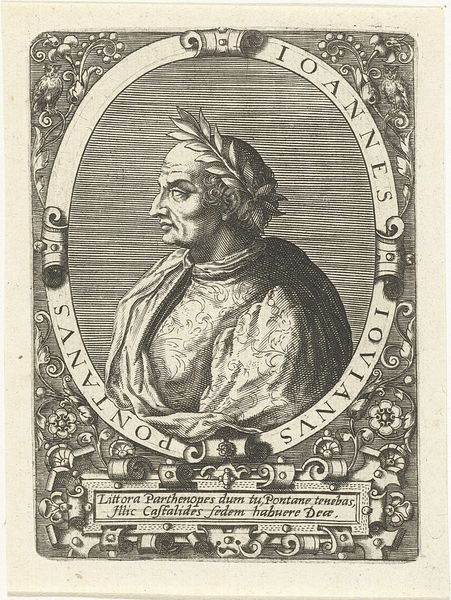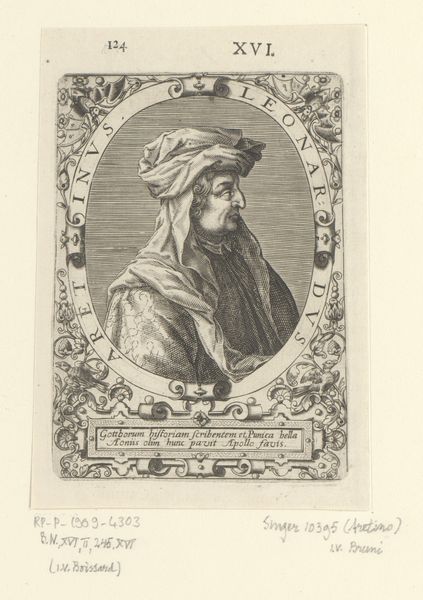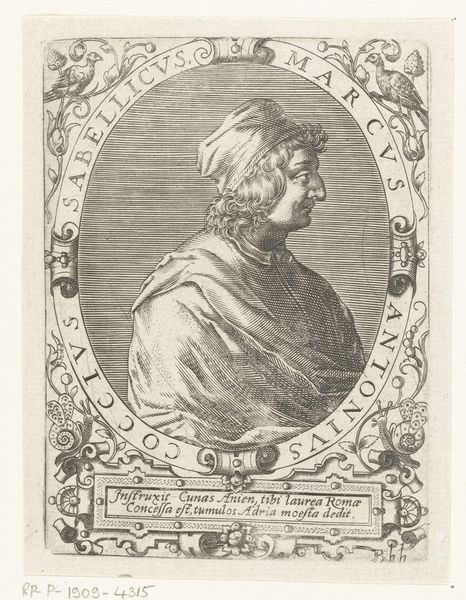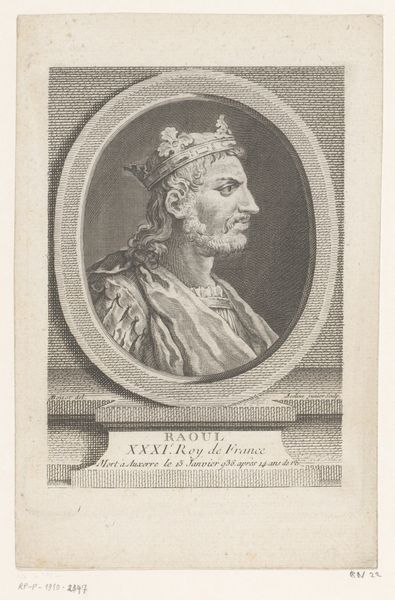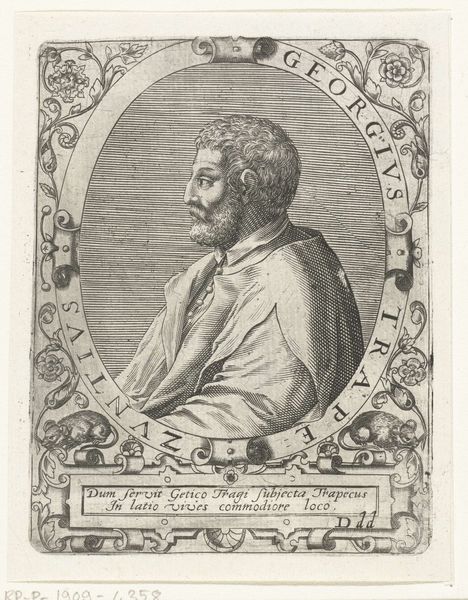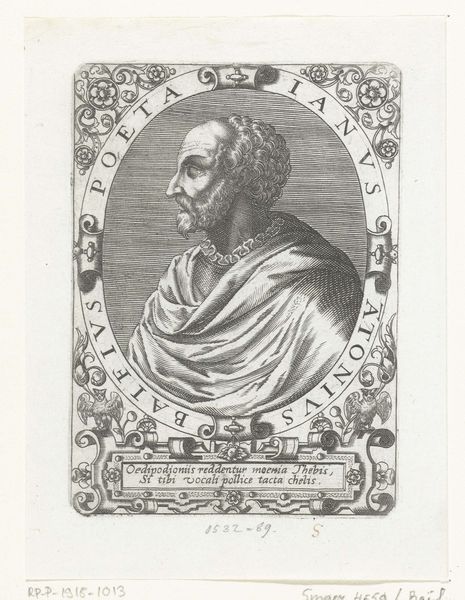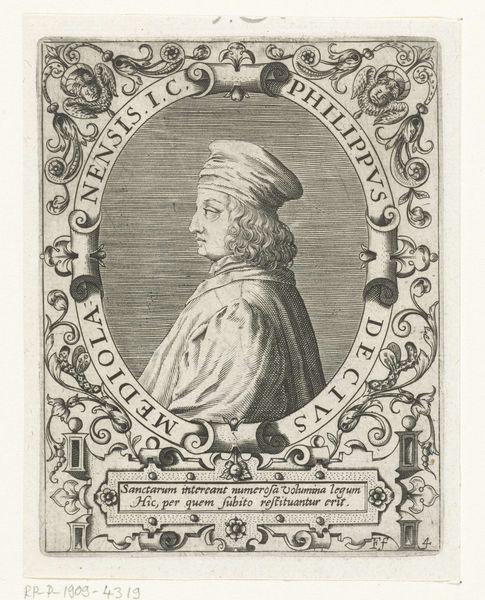
#
pencil drawn
#
aged paper
#
light pencil work
#
pencil sketch
#
old engraving style
#
personal sketchbook
#
pen-ink sketch
#
limited contrast and shading
#
ink colored
#
pencil work
Dimensions: height 140 mm, width 100 mm
Copyright: Rijks Museum: Open Domain
Editor: Here we have "Portret van Ermolao Barbaro" by Theodor de Bry, made around 1597 to 1599. It seems to be an ink or pencil drawing. It's giving me a very formal, almost imposing vibe. What catches your eye about it? Curator: What I see is an intriguing example of how early modern portraiture functioned within a very specific social context. This isn't just about depicting a person, it's about constructing an image of authority. Notice how Ermolao Barbaro, likely a significant figure, is framed within this decorative oval, almost like he’s placed on a coin or medal, meant for distribution. What does the placement suggest to you? Editor: I guess that framing elevates him, makes him seem more important and like, reproducible. Curator: Exactly. These images circulated, reinforcing hierarchies. Prints like this played a key role in shaping public perception of important figures. Think about it – how does this image, meant to be reproduced and widely seen, contribute to our understanding of power dynamics at the time? How are images utilized to broadcast particular perspectives? Editor: So it’s not just about how he looked, but about projecting a certain image, a carefully constructed persona. That’s powerful stuff! It also raises a question, about the perception and distribution of art and people of power. Curator: Precisely. We should keep such questions in mind when understanding portraits and figures in general. Editor: This really changed how I see this portrait; it's more than just a likeness. Curator: And seeing that wider cultural and political function really highlights how this work speaks to us across the centuries.
Comments
No comments
Be the first to comment and join the conversation on the ultimate creative platform.
